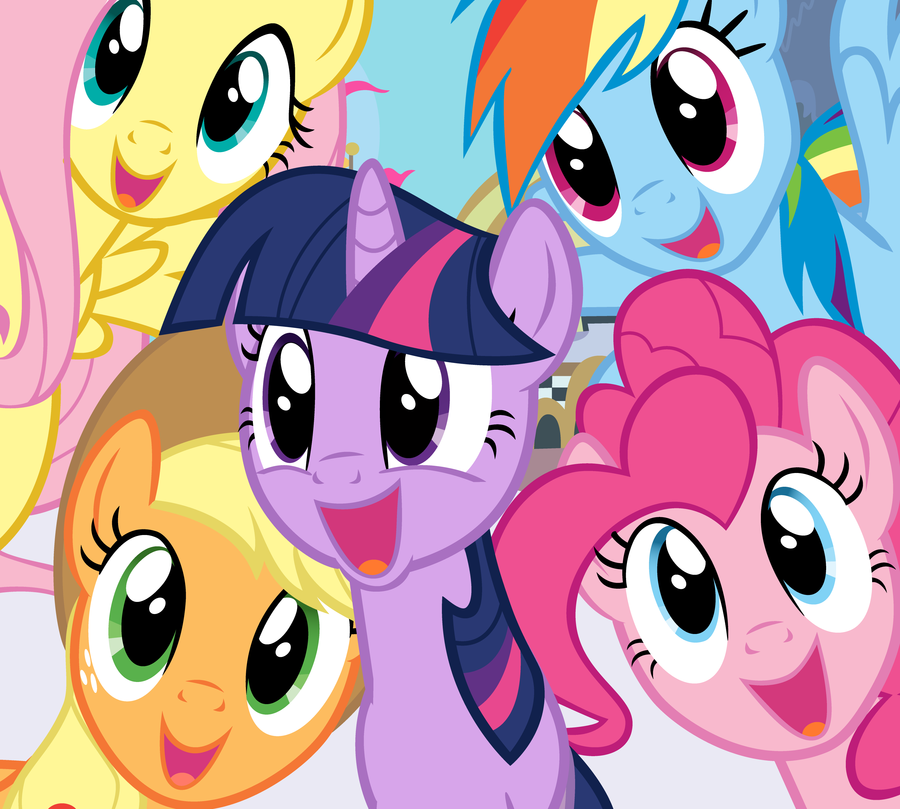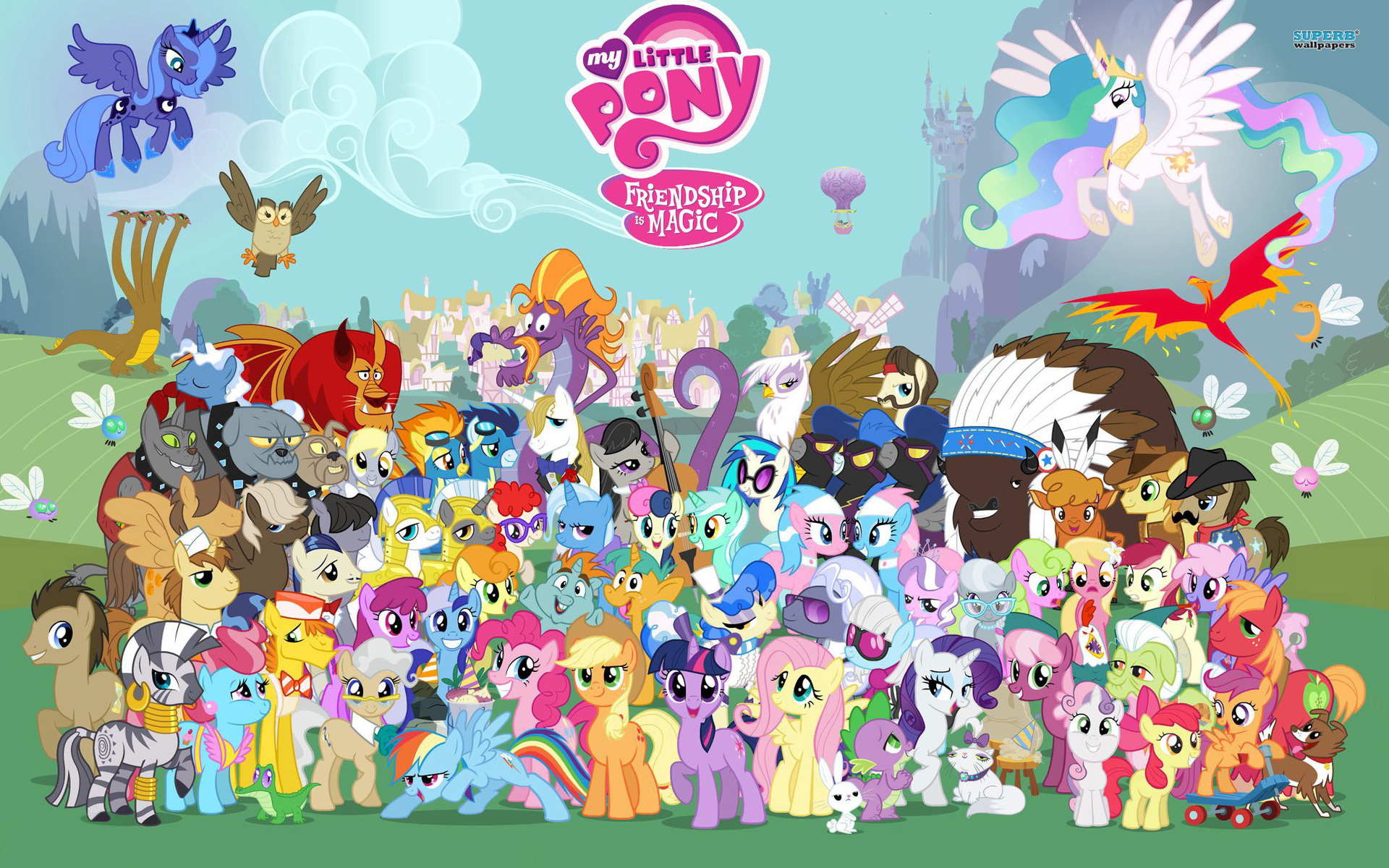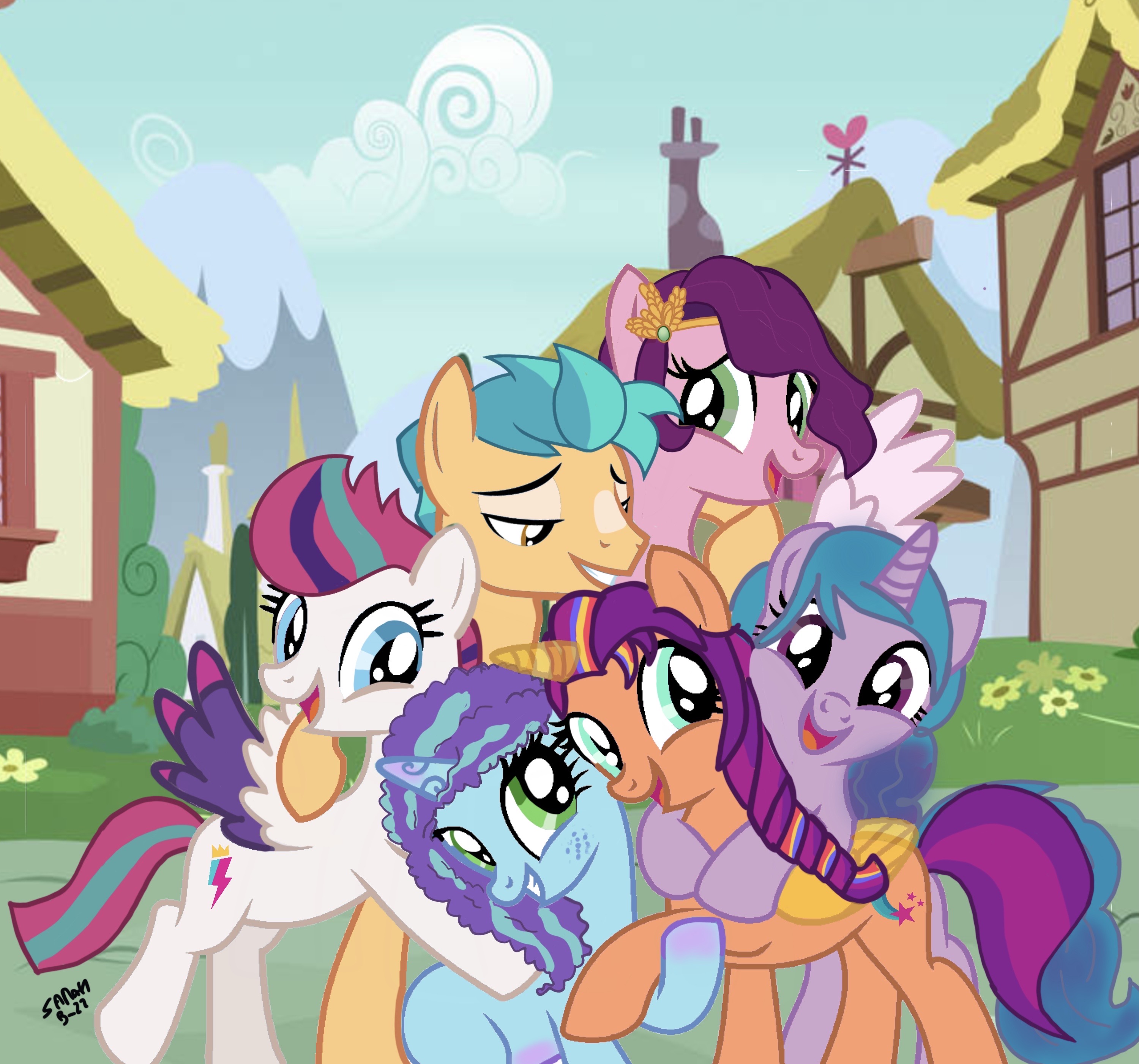Understanding The **MLP Noose Meme**: A Look At Online Culture
The internet, in a way, is a vast, ever-shifting canvas where ideas, images, and humor, quite frankly, take on lives of their own. Sometimes, what starts as a niche inside joke or a piece of edgy content can, you know, spread far and wide, gaining different meanings along the way. One such example, a bit unsettling for many, is the "MLP noose meme." This particular piece of online culture has sparked a lot of conversation, prompting us to consider how images are created, shared, and understood in digital spaces. It's really about looking at a specific phenomenon that, you know, made waves and what it means for how we communicate online.
When we talk about "MLP," it’s interesting, because that acronym can actually mean a few different things. For some, it might bring to mind complex neural networks, like a Multi-Layer Perceptron, which, as a matter of fact, is a type of AI structure used for processing data. CNN, for example, is pretty good with image data, you know, extracting features, while Transformer models, they're good with sequences, thanks to self-attention. MLP, in that context, is known for its strong ability to express and generalize across many machine learning tasks. It’s basically a multi-layered, feedforward network, where information moves, you know, from the input layer through hidden layers to the output. So, there's that technical side of "MLP," often seen in discussions about AI and deep learning, like on platforms such as Zhihu, where people share knowledge.
However, when people refer to the "MLP noose meme," they are, almost always, talking about something entirely different. Here, "MLP" stands for "My Little Pony," the popular media franchise. The meme itself involves imagery from this franchise combined with the disturbing element of a noose. This combination, you see, creates a stark and, frankly, often shocking contrast between the innocent, colorful world of the ponies and a symbol of despair or violence. It's a rather stark example of how internet humor can, sometimes, push boundaries, sometimes in ways that many find very problematic.
Table of Contents
- What Is the MLP Noose Meme?
- Origins and Spread
- Why It Became Controversial
- Community Reactions
- The Impact of Edgy Humor Online
- Navigating Sensitive Content in Online Spaces
- The Longevity and Legacy of the Meme
- Frequently Asked Questions
What Is the MLP Noose Meme?
The "MLP noose meme," in essence, combines elements from the "My Little Pony" animated series with the image of a noose. It's a type of dark humor, or "edgy" content, that, you know, relies on the shock value of pairing something typically innocent and child-friendly with something grim and very serious. The visuals often feature a character from the show, usually a pony, depicted in a situation that suggests suicide or self-harm, with a noose prominently featured. This kind of content, frankly, is designed to provoke a strong reaction, whether it's discomfort, disgust, or, for some, a twisted sense of amusement. It's, you know, a very specific type of internet artifact.
The purpose behind creating or sharing such a meme can vary wildly. Some people might use it as a form of "anti-humor," trying to be funny by being deliberately offensive. Others might be trying to express feelings of despair or hopelessness, using the stark contrast as a way to, you know, articulate difficult emotions. Then there are those who simply share it without much thought, perhaps not fully grasping the weight of the imagery involved. It's, basically, a complex piece of digital expression that carries a lot of baggage.
It’s important to distinguish this "MLP" from the technical term, Multi-Layer Perceptron, which is, actually, a foundational concept in artificial intelligence. As "My text" explains, an MLP is a type of feedforward neural network, meaning information flows in one direction, from input to output. It has multiple layers of "perceptrons" or neurons, and it’s very good at learning complex patterns in data. So, when we talk about MLP in the context of AI, we're discussing algorithms and computational structures, like those used in image recognition or sequence processing, which is, you know, a completely different universe from internet memes.
- Ella Langley Nationality
- %D0%BA%D1%80%D0%B8%D1%81%D1%82%D0%BE%D1%84%D0%B5%D1%80 %D0%B8%D0%B7 %D1%81%D0%BE%D0%BF%D1%80%D0%B0%D0%BD%D0%BE
Origins and Spread
The exact origin of the "MLP noose meme" is a bit hazy, as is often the case with internet phenomena. These kinds of memes usually start in very specific corners of the internet, often on image boards or forums known for their more, shall we say, unrestricted content policies. Think of places where people, you know, gather to share very niche or provocative humor. It's not something that just pops up everywhere all at once.
Early versions of the meme likely emerged from communities that enjoy dark humor or "edgelord" content, where pushing boundaries is, you know, part of the fun. The "My Little Pony" fandom, surprisingly, has a segment known as "bronies" (adult fans), and within that large group, some sub-communities also engage with more adult or controversial interpretations of the franchise. This isn't to say the entire fandom embraces such content; far from it. But, you know, like any large online group, it has its diverse elements.
The spread of the meme happens through re-sharing on various platforms. Once it appears on one site, it might be picked up and shared on others, sometimes reaching a wider audience that might not be familiar with its original context or intent. This is how many internet trends, good or bad, tend to, you know, gain traction. It's a very organic, almost viral process, where content gets passed along, often without much thought about its implications.
It's fascinating, actually, how different "MLP" contexts exist. For instance, in machine learning, MLP, the Multi-Layer Perceptron, is a core building block. It's a network where, basically, each layer connects to the next, and it processes data sequentially, which is, you know, what "feedforward" means. Researchers are always, arguably, finding new ways to use it, sometimes even comparing it to newer architectures like Transformer models, which, you know, also handle data globally. So, while one "MLP" is about algorithms, the other is, quite literally, about ponies and, unfortunately, very dark imagery.
Why It Became Controversial
The controversy surrounding the "MLP noose meme" is, you know, pretty straightforward. The image of a noose is a powerful, deeply disturbing symbol associated with suicide, violence, and historical atrocities. When paired with characters from a children's show, it creates a jarring and, frankly, offensive juxtaposition for most people. This isn't just "edgy" humor; it touches on themes that are, you know, incredibly sensitive and painful for many.
For individuals who have experienced mental health struggles, lost loved ones to suicide, or are simply empathetic, the meme can be genuinely distressing and triggering. It trivializes a very serious issue, potentially normalizing or even encouraging harmful thoughts, which is, you know, a huge concern. Online communities and platforms often struggle with how to manage such content, balancing free expression with the need to protect users from harmful material.
The "My Little Pony" brand itself is also, naturally, very protective of its image. Content that distorts its characters into symbols of despair or violence goes against everything the franchise stands for. This creates a conflict between the creators of the content and the broader audience, as well as the brand owners. It's a clear example of how, sometimes, internet culture can clash with corporate identity and, more importantly, public decency.
Consider, for a moment, how different this is from the "MLP" in computational science. That "MLP" is a tool, a method, if you will, for solving problems. It's, basically, a mathematical structure that learns from data. Its controversy, if any, might be about its limitations or comparisons to other algorithms, not about its inherent imagery. It’s a very functional concept, like a building block in a much larger, complex system, which is, you know, quite a contrast to a meme that causes distress.
Community Reactions
Reactions to the "MLP noose meme" have been, you know, quite varied, but largely negative from mainstream audiences and the "My Little Pony" fandom itself. Many fans of the show, especially those who appreciate its positive messages of friendship and kindness, have expressed outrage and disgust. They see the meme as a disrespectful and harmful distortion of characters they care about. It's, basically, a direct attack on the wholesome image they associate with the franchise.
Online platforms and content moderators have also, naturally, had to deal with this meme. Content that promotes self-harm or suicide is, you know, almost universally prohibited by community guidelines on major social media sites. So, when this meme appears, it's often reported and removed, though its rapid spread can make full eradication a real challenge. It's a constant battle for platforms to keep up with, you know, the flow of new content.
On the other hand, within the niche communities where such "edgy" humor thrives, the meme might be seen differently. Some users might defend it as a form of dark comedy, a way to cope with difficult emotions, or simply as a challenge to societal norms. This perspective, however, often overlooks the very real harm and distress it can cause to others. It's a very specific kind of humor that, you know, doesn't translate well to a wider audience.
It’s worth noting, too, it's almost like comparing apples and oranges when you think about the two "MLP" meanings. The Multi-Layer Perceptron, as we discussed, is, you know, a powerful tool in AI, capable of learning from vast datasets. Its development is, arguably, about pushing the boundaries of what machines can understand and do. The reactions to it are usually about its effectiveness, its computational cost, or its theoretical underpinnings. So, you know, the "MLP" of AI evokes intellectual curiosity, while the meme "MLP" evokes, well, a very different kind of feeling.
The Impact of Edgy Humor Online
Edgy humor, like the "MLP noose meme," has a complex impact on online culture. On one hand, some argue that it serves as a pressure release, allowing people to express taboo thoughts or feelings in a way that, you know, might not be acceptable in real-world conversations. It can be a form of rebellion against perceived societal restrictions, or a way for niche groups to bond over shared, often controversial, humor. This kind of humor, you know, often pushes the envelope.
However, the negative consequences are, quite frankly, often far more significant. When humor crosses into themes of self-harm, hate speech, or violence, it can normalize these concepts. This normalization, you know, can have serious real-world implications, especially for vulnerable individuals. It can create an environment where harmful ideas are not only tolerated but, perhaps, even encouraged, making online spaces feel unsafe for many.
Furthermore, the constant exposure to such content can, in a way, desensitize people to serious issues. What might initially be shocking can, you know, become commonplace, leading to a diminished capacity for empathy. This desensitization is a real concern for mental health advocates and those who work to make the internet a safer place. It's a subtle but powerful shift in how people perceive, you know, very grave topics.
Think about it: the MLP (Multi-Layer Perceptron) in AI is, you know, designed to generalize from data, to find patterns and make predictions. Its "impact" is about its utility, its ability to solve problems, like how KAN is now, arguably, being compared to it, or how it contributes to the broader field of deep learning. The impact of the meme "MLP," however, is, basically, about its emotional and social consequences, which is, you know, a very different kind of impact altogether.
Navigating Sensitive Content in Online Spaces
Dealing with sensitive content like the "MLP noose meme" is, frankly, a huge challenge for online platforms, users, and parents alike. For platforms, it involves a delicate balance: upholding freedom of expression while also protecting users from harmful material. This means having clear community guidelines, robust reporting mechanisms, and, you know, effective content moderation teams. It's a constant, evolving effort to keep up with the sheer volume of content.
For individual users, it means being mindful of what they consume and share. If you encounter content that makes you uncomfortable or seems harmful, it's, you know, generally a good idea to report it to the platform. It also involves being a responsible digital citizen, thinking twice before re-sharing anything that could cause distress or promote harmful ideas. Your actions, you know, can make a difference.
Parents, too, have a role to play in guiding younger users through the complexities of the internet. This includes open conversations about what they see online, teaching critical thinking skills, and explaining why certain content is inappropriate or harmful. It's about fostering a safe online environment, which is, you know, a continuous process. Learn more about online safety on our site.
It’s interesting how, you know, the "MLP" of AI helps us navigate complex data, like how CNNs are good at image processing or Transformers handle sequences. These tools, in a way, help us make sense of vast amounts of information. But navigating sensitive content in online spaces is, basically, a human challenge, requiring empathy, ethical considerations, and, you know, community effort. It’s not something an algorithm can easily solve.
The Longevity and Legacy of the Meme
The "MLP noose meme," like many internet trends, has seen its peak and, you know, likely declined in widespread popularity. Memes often have a relatively short lifespan, fading as new ones emerge. However, the legacy of such a meme isn't just about its fleeting popularity; it's about the discussions it sparks and the questions it raises about online behavior, humor, and responsibility. It leaves a mark, in a way, on the collective memory of the internet.
Its existence serves as a reminder that the internet, while a place for connection and creativity, can also be a space where dark and disturbing content can, you know, unfortunately, proliferate. It highlights the ongoing need for vigilance, thoughtful engagement, and robust moderation strategies from platforms and users alike. It's a continuous learning process for everyone involved.
Ultimately, the "MLP noose meme" is a case study in how symbols and meanings can be twisted online, and how different communities react to such transformations. It underscores the importance of media literacy and the ability to critically assess the content we encounter, which is, you know, more important than ever in our digital world. You might find more insights into this topic by visiting Google Trends for "mlp noose meme" to see its search popularity over time.
And, you know, speaking of legacy, the "MLP" of machine learning, the Multi-Layer Perceptron, has a very different kind of lasting impact. It's a foundational algorithm that continues to be, you know, very relevant in AI research and applications. Its legacy is about its contribution to the advancement of technology and our understanding of intelligence. It's a tool that, you know, keeps on giving in the world of data.
Frequently Asked Questions
What does MLP stand for in the context of the meme?
In the context of the meme, "MLP" almost always stands for "My Little Pony," referring to the popular animated children's franchise. It's, you know, a very specific use of the acronym, distinct from its meaning in artificial intelligence.
Why would someone create or share such a disturbing meme?
People might create or share such a meme for various reasons, including dark humor, a desire to provoke a reaction, or, in some cases, to express feelings of despair. It's, you know, often an attempt to be edgy or to shock an audience.
How do online platforms handle memes that involve sensitive topics like self-harm?
Online platforms typically have strict community guidelines against content promoting self-harm or suicide. Such memes are usually reported by users and, you know, then removed by content moderators to maintain a safe environment. You can learn more about internet content policies on this page.

MLP Pictures - My Little Pony Friendship is Magic Photo (30529220) - Fanpop

my little pony - MLP:FiM Characters Photo (35379875) - Fanpop

Mlp G5 1st Anniversary by SarahTheFox97 on DeviantArt